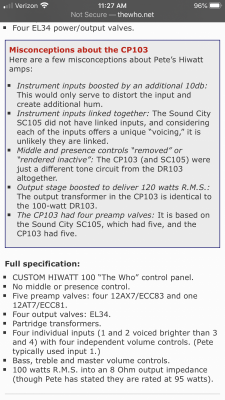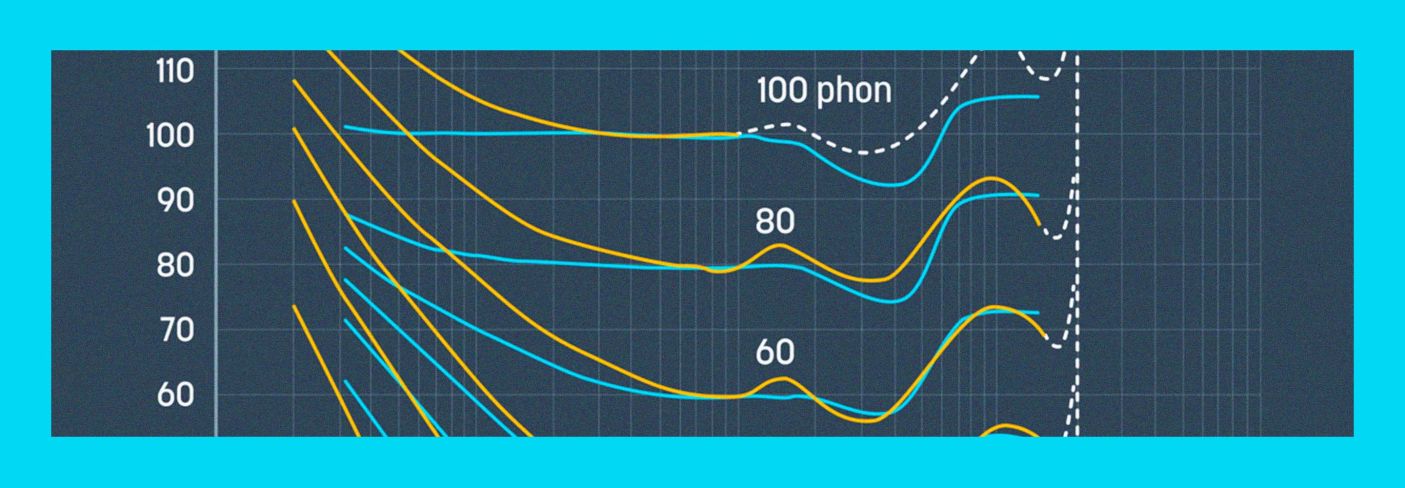RandomPrecision
TDPRI Member
I stumbled across this Tone Stack Calculator site. It's a pretty cool tool, if you haven't seen it. If I understand it correctly, it basically models the frequency response of the preamps of common guitar amplifiers, including Hiwatt. It also allows you to virtually adjust tone control pots, and even change the values of the RC networks that make up the tone stack, and see how that influences the frequency response.
Now, I know the sound and frequency response of a guitar amplifier is more than just the preamp. Obvious other major influences include the speaker(s) power amp, transformers; there are clearly numerous other factors as well. But for the purpose of this discussion, I'll assert the classic all other things being equal qualifier.
So my question is, do Hiwatt amps truly have a midrange dip, as suggested by the TSC website above? I feel like a lot of what I've read about Hiwatt suggests that they have a particularly strong midrange, and no midrange dip, like Fender. In particular, much of this impression is based on what I've read on Gilmourish.com, e.g. the Amps page. I don't have links handy, but I've read a lot of random forum commentary (not just here) where folks suggest the Hiwatt circuit is more "hi fi", which would imply a flat frequency response. (Maybe I should be careful with that statement, given that some hi fi enthusiasts champion equipment that decidedly does not have a flat frequency response!)
Either way, the TMB controls allow you to mostly dial out the midrange dip.
Is anyone aware of any work done where people have measured the frequency response of guitar amplifiers? Parts Express sells a speaker measurement kit that I've been tempted to buy for a while now (I also do DIY speakers and audio electronics). But I'd be really interested in seeing the actual measured frequency response of popular amplifiers, along with all the relevant details (speakers, settings, room, etc).
Now, I know the sound and frequency response of a guitar amplifier is more than just the preamp. Obvious other major influences include the speaker(s) power amp, transformers; there are clearly numerous other factors as well. But for the purpose of this discussion, I'll assert the classic all other things being equal qualifier.
So my question is, do Hiwatt amps truly have a midrange dip, as suggested by the TSC website above? I feel like a lot of what I've read about Hiwatt suggests that they have a particularly strong midrange, and no midrange dip, like Fender. In particular, much of this impression is based on what I've read on Gilmourish.com, e.g. the Amps page. I don't have links handy, but I've read a lot of random forum commentary (not just here) where folks suggest the Hiwatt circuit is more "hi fi", which would imply a flat frequency response. (Maybe I should be careful with that statement, given that some hi fi enthusiasts champion equipment that decidedly does not have a flat frequency response!)
Either way, the TMB controls allow you to mostly dial out the midrange dip.
Is anyone aware of any work done where people have measured the frequency response of guitar amplifiers? Parts Express sells a speaker measurement kit that I've been tempted to buy for a while now (I also do DIY speakers and audio electronics). But I'd be really interested in seeing the actual measured frequency response of popular amplifiers, along with all the relevant details (speakers, settings, room, etc).


